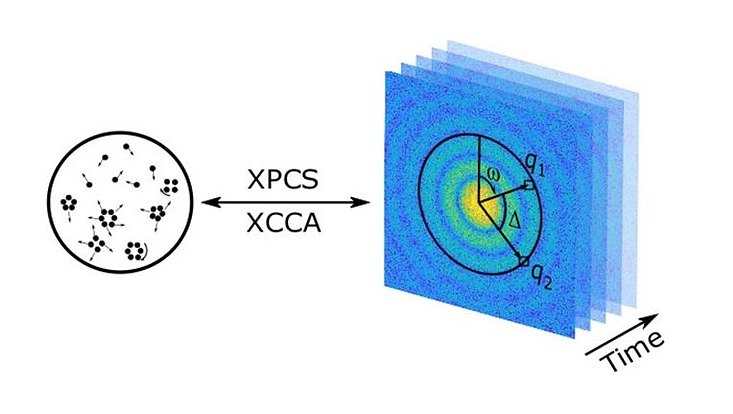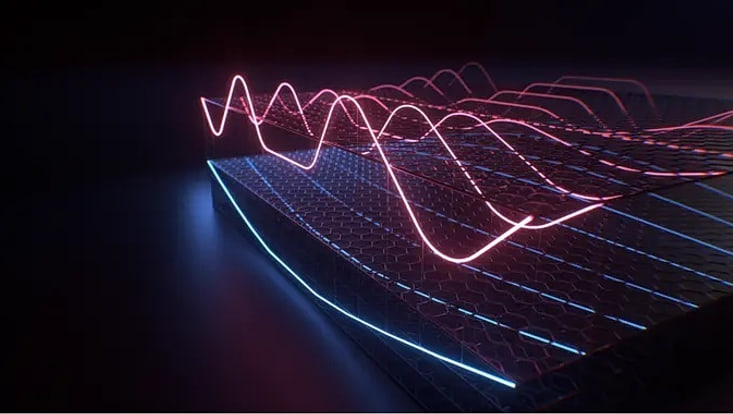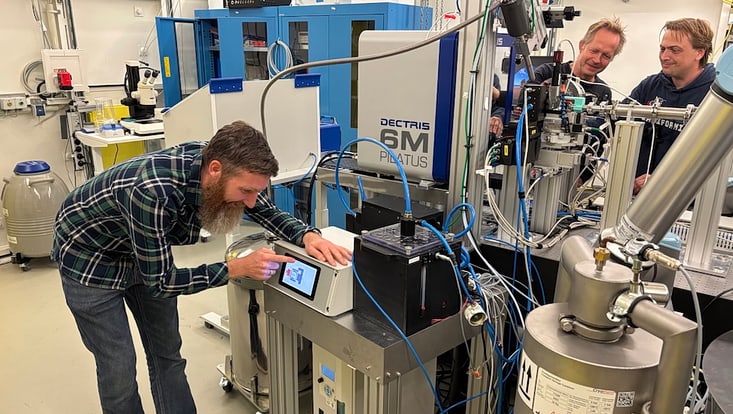Imaging of Matter
Researchers combine techniques to analyze glass transition
17 May 2023

Photo: DOI: 10.1021/acs.jpclett.3c00631, Creative Commons Attribution License 4.0 (CC BY)
During the transition from the liquid to the solid glass state, a special state forms at the atomic level between a disordered liquid and a crystalline solid. A DESY research team led by Felix Lehmkühler, who also conducts research in the Cluster of Excellence "CUI: Advanced Imaging of Matter", has now presented a new technique in "The Journal of Physical Chemistry Letters" that shines light on the structure and dynamics of a liquid close to the glass transition.
Although glasses have long been studied, surprisingly little is known about glass formation. The structure of glass resembles a liquid, but in contrast, the atoms in a glass are basically immobile: the dynamics or viscosity of these materials slow down by more than 12 orders of magnitude before crossing the glass transition. This effect is still not understood; in addition, the question of why a material forms a glass rather than a crystalline solid is also unresolved.
A common understanding from theory is that the local structure of the atoms in a liquid may play a key role. For instance, if some atoms tend to form icosahedral clusters, they cannot grow into an ordered crystal and thus disturb further nucleation as well as the growth of crystal nuclei.
So, studies of the glass transition need to address both structure and dynamics of the investigated system. The research team used the ‘Coherence Applications Beamline’ P10 of DESY’s X-ray source PETRA III, which enables investigating dynamics by means of X-ray photon correlation spectroscopy (XPCS). In the current work, the researchers focused on a colloidal hard sphere system. Here, the phase can be easily tuned by the volume fraction of the colloidal nanoparticles in the dispersion.
The number and the lifetime of ordered clusters grows close to the glass transition
The researchers combined the XPCS technique with higher-order intensity correlation data from a so-called X-ray cross correlation analysis (XCCA). In doing so, they could track the dynamics not only of the single particles but also the lifetime of particle clusters via dynamics of higher-order correlation functions. Approaching the glass transition, these dynamics showed a stronger deceleration than the single-particle dynamics tracked only by XPCS. “This is an indication that the local order becomes more long-lived in the vicinity of the glass transition”, explains Nele Striker, the main author of the study. “This means that not only the number, but also the lifetime of ordered clusters grows close to the glass transition.”
“This new experimental approach using coherent X-rays can be extended to detect structure-dynamics correlations on many length scales”, says Fabian Westermeier, scientist at the PETRA III beam line P10 and co-author of the study. Beside glassy samples, other phase transitions or lifetimes of transient structure in liquids such as water can be investigated. Text: DESY Photon Science, ed.
Reference
Nele N. Striker, Irina Lokteva, Michael Dartsch, Francesco Dallari, Claudia Goy, Fabian Westermeier, Verena Markmann, Svenja C. Hövelmann, Gerhard Grübel, und Felix Lehmkühler,
"Dynamics and Timescales of Higher Order Correlations in Supercooled Colloidal Systems"
J. Phys. Chem. Lett. (2023)


